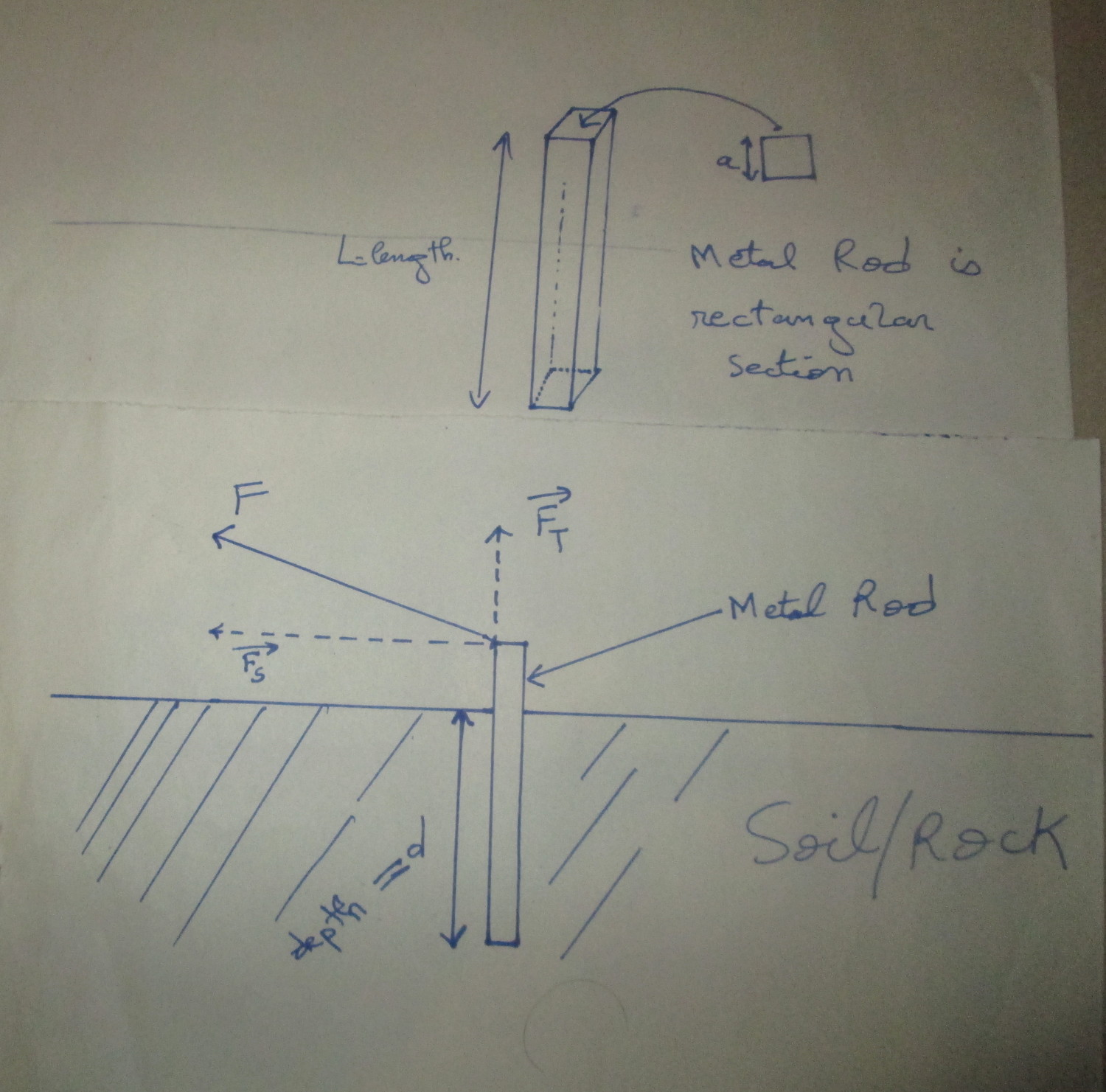Hello;
Kindly help me to start the resolution of this problem, I have searched for many similar problems related to anchors but most of them calculates the vertical
pull-out force which is not the case here. So lets start.
We have a flat ground surface made of rock, we already made a hole which have the same size to fit our iron bar on it
(watch the attached picture to understand).
Now our bar is pushed down to the end of the hole, we apply now a force F to the head of the bar in one single direction and this force make an angle
of 20° with the horizontal axis. The Question is to calculate the maximum load of the force F that the ground surface and the iron bar can accept
before a failure of the ground. For information, the force should be applied for a maximum time of 3 seconds.
Here are the data:
L: Length of the iron bar
a: Width of the iron bar which have a cross section in form of a square
d: Depth of penetration of the iron bar into the flat ground
20°: The degree angle between the direction of the Force F and the horizontal axis (or 70° angle to vertical axis)
F: The load in Newtons applied to the head of the bar
If you already know a solution to a similar problem found in some webpage then kindly tell me, I appreciate your help.
Thank you

Kindly help me to start the resolution of this problem, I have searched for many similar problems related to anchors but most of them calculates the vertical
pull-out force which is not the case here. So lets start.
We have a flat ground surface made of rock, we already made a hole which have the same size to fit our iron bar on it
(watch the attached picture to understand).
Now our bar is pushed down to the end of the hole, we apply now a force F to the head of the bar in one single direction and this force make an angle
of 20° with the horizontal axis. The Question is to calculate the maximum load of the force F that the ground surface and the iron bar can accept
before a failure of the ground. For information, the force should be applied for a maximum time of 3 seconds.
Here are the data:
L: Length of the iron bar
a: Width of the iron bar which have a cross section in form of a square
d: Depth of penetration of the iron bar into the flat ground
20°: The degree angle between the direction of the Force F and the horizontal axis (or 70° angle to vertical axis)
F: The load in Newtons applied to the head of the bar
If you already know a solution to a similar problem found in some webpage then kindly tell me, I appreciate your help.
Thank you

![[smile2] [smile2] [smile2]](/data/assets/smilies/smile2.gif)
![[smile] [smile] [smile]](/data/assets/smilies/smile.gif) ;
;